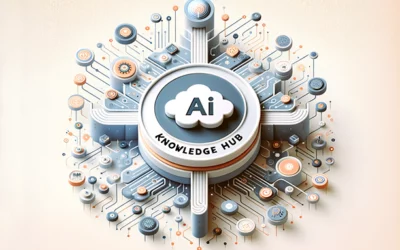In the current landscape of digital transformation, artificial intelligence (AI) stands out as a driver of innovation, with the potential to make our work activities more efficient and aligned with human communication modalities. Teriyaki’s Generative AI platform is at the forefront of this revolution, providing sophisticated tools to renew the way we interact with technology through natural language. To fully leverage these tools, mastering the creation of appropriate prompts is crucial. This article aims to offer strategies and tips, derived from the latest research and advancements in the AI field, to enhance your communication with Teriyaki.
The Essential Role of Context in AI Communication
The first step toward effective interaction with Teriyaki is acknowledging the importance of context. Psycholinguistics teaches us that “grounding” — the process by which participants in a conversation establish a shared understanding — is fundamental. Unlike humans, who rely on a broad shared context based on common experiences, Teriyaki’s AI requires this context to be explicitly provided. Highlighting this context clearly in prompts significantly improves the quality of outcomes, underscoring the need to include relevant details and information that might not be immediately accessible to the AI.
Valuing a Collective Approach for Diverse Responses
Optimizing interaction with Teriyaki also involves adopting a collective approach. Asking the AI for multiple solutions or ideas for a specific query, ideally three or more, significantly enriches the set of possible responses. This method, reflecting the principle of “wisdom of the crowd,” not only offers a variety of perspectives but also encourages the AI toward creative and innovative solutions. A collective approach enhances the effectiveness of our dialogue with artificial intelligence, allowing Teriyaki users to discover a wider range of options and ideas.
Preferring Recognition Over Recall for Greater Intuitiveness
A key element for the usability of Teriyaki’s interface is favoring recognition over recall. Rather than relying solely on textual commands, which assume the user’s ability to generate content or instructions from scratch, Teriyaki encourages the use of graphical interfaces and selection from pre-set menus. This approach, facilitating a more intuitive and less burdensome interaction with the AI, is further enhanced by implementing libraries of pre-configured prompts and customizing the user experience through the storage and reuse of favorite prompts.
Transforming Requests into Dialogues for Better Outcomes
Another vital principle for maximizing the benefits of Teriyaki is to convert complex requests into a sequence of dialogues or actions. This approach, achievable through “chain of thought” prompting, allows for breaking down intricate tasks into simpler requests, thus improving the accuracy and effectiveness of responses. This technique promotes a dynamic and flexible interaction with the AI, favoring more in-depth and detailed communication.
Exploration and Adaptation: Keys to Innovation in AI
In the rapidly evolving sector of AI, exploration and adaptability are crucial. To this end, Teriyaki users are encouraged to experiment with different prompt formats and adjust their techniques based on the outcomes achieved. In case of failure, it is worthwhile to experiment with various formulations to identify the most effective approach. This openness to innovation not only enhances the user experience but also pushes the boundaries of what is achievable with Teriyaki.
Conclusion: Leveraging the Potential of Teriyaki’s Generative AI
Being able to communicate effectively with Teriyaki’s AI opens up a universe of possibilities, revolutionizing our approach to work and creativity. By following the suggested advice — from providing detailed context, valuing a collective approach, favoring recognition, converting requests into dialogues, to encouraging exploration and adaptation — one can optimize the capabilities of this cutting-edge platform. Teriyaki’s Generative AI is not just an advanced tool; it represents a collaborative partner that, guided by well-structured prompts, can lead to unprecedented innovations and discoveries.




